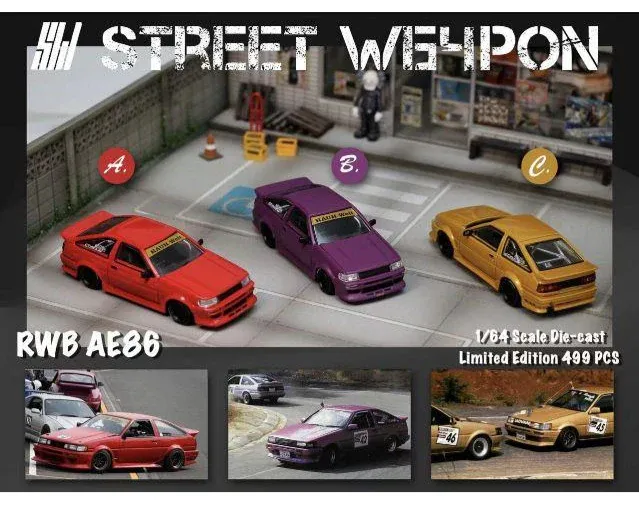Street Weapon 1:64 RWB Toyota AE86 Wide Body
Rauh-Welt Begriff. Three words that conjure images of raw, aggressive, unapologetically wide Porsche 911s, meticulously crafted by the enigmatic Akira Nakai. His philosophy isn't about perfection in the conventional sense, but about individuality, the "rough world" aesthetic, and an almost brutalist artistry. Each RWB car is a defiant brushstroke, a unique interpretation of an icon, often polarizing but always captivating.
Then there's the Toyota AE86. The humble Hachi-Roku. A lightweight, rear-wheel-drive icon from the 80s, immortalized by Initial D. It’s a car celebrated for its modest power, high-revving 4A-GE engine, nimble chassis, and a raw, analog driving experience that connected driver to road with an almost telepathic bond. It’s the darling of drift culture, a symbol of grassroots motorsport, and a testament to the idea that true performance isn't always about brute force, but about balance and driver skill.
Deep-dish, multi-piece wheels, wider than anything an AE86 was ever designed to accommodate, would fill those arches, their polished lips glinting, tires stretched taut and barely clearing the bodywork. The stance would be impossibly low, a ground-hugging menace, achieved through custom coilovers tuned for the track, but also for that unmistakable RWB aesthetic.
The rivet lines, a hallmark of RWB construction, would trace the new body lines, a testament to the hands-on, no-compromise approach. A massive, often multi-element, rear wing – not subtle, but a statement – would anchor the rear, balanced by an equally aggressive diffuser, perhaps incorporating a custom exhaust system that spits flames and amplifies the glorious shriek of a heavily-modified 4A-GE, or perhaps an even more audacious, high-revving engine swap.

